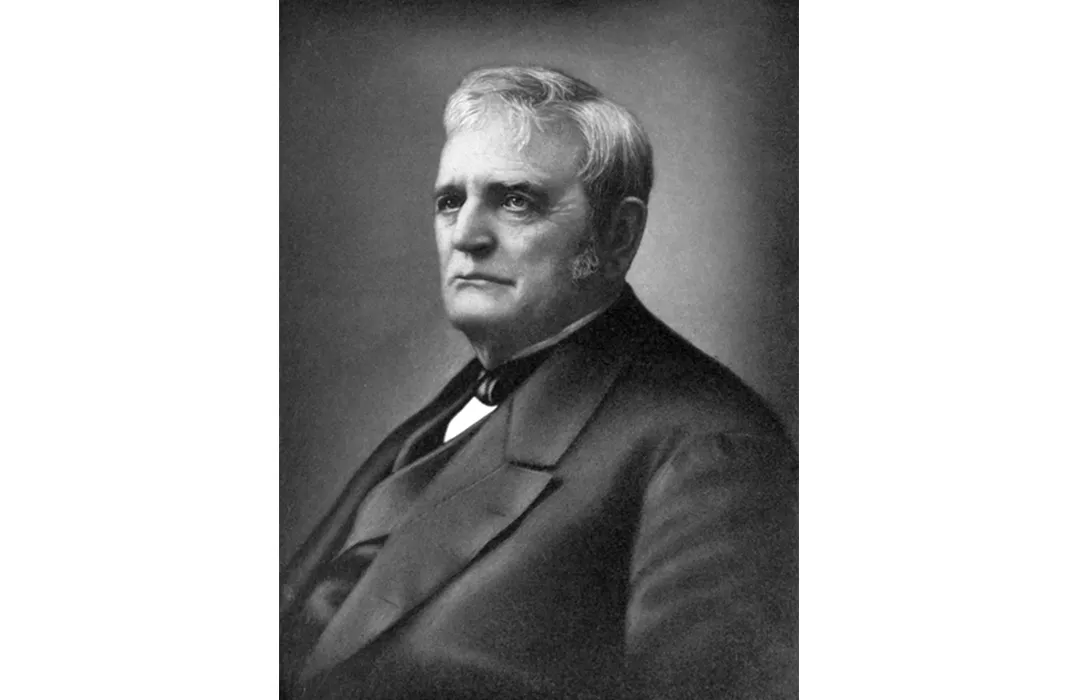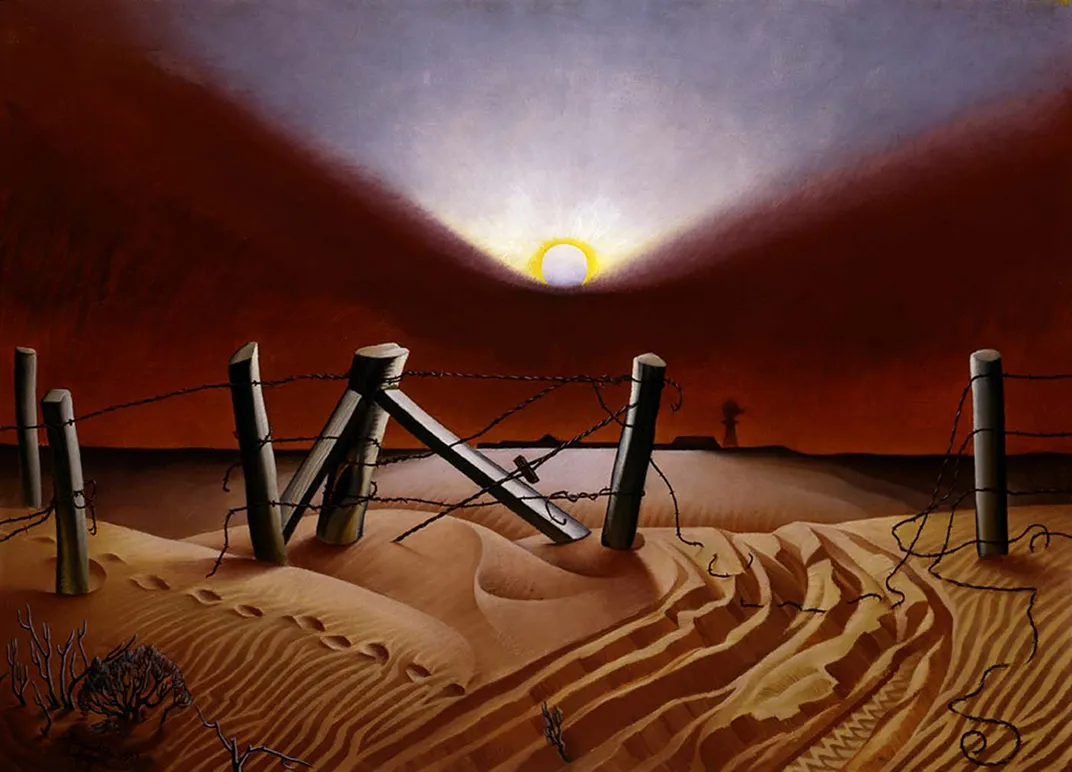Did John Deere’s Best Invention Spark a Revolution or an Environmental Disaster?
When Deere created his now-famous steel plow, he created America’s breadbasket and set the stage for many of modern farming’s environmental problems
/https://tf-cmsv2-smithsonianmag-media.s3.amazonaws.com/filer/c9/76/c976d920-5860-4e37-ac07-afcabcabe9ba/nmah200335624web.jpg)
In 1837 in an Illinois sawmill, a long, steel saw blade broke. The mill was probably filled with the nutty scent of freshly cut white oak and one imagines that the discarded blade was covered in a layer of fine, pale sawdust.
Martin Van Buren was president, a financial crisis was in the news and America's most popular song was, ironically, “Woodman, Spare That Tree.” Steel was a scarce commodity in those days and the old blade caught the eye of a young visiting blacksmith named John Deere, who took it home.
He forged the blade into a plow and the plow forged a farming revolution.
As the Anthropocene epoch arose, the reshaping of the Earth's surface has largely taken place, one furrow at a time, behind plows. The earliest plows drawn by livestock first appear in the archaeological record about 8,000 years ago.
Transformation of land was incremental until the industrial revolution. Steel, engines and mass production resulted in farming equipment that rapidly bent most of the planet's land to the will of human beings. John Deere's early steel plows represent a key moment in time where Stone age technology was upgraded into something of which Henry Ford certainly would have been proud.
In the 1830's, young America was moving west and settling the prairie. Farmland with rich, black soil stretched out like an ocean of grass. If that soil could be cultivated, fortunes could be made. One of the major obstacles was the soil itself. The plants of the native prairie had a tangle of tough roots that standard plows of the day had difficulty cutting through. The soil was stickier than the sandier soils back east. It tended to clump up on the blade of a plow, requiring a farmer to stop every few minutes to clear it.

The smooth surface of steel seemed like a logical alternative to coarser iron. Steel could shed, or scour, the sticky black prairie soil. Another Illinoisan blacksmith, John Lane, is credited as among the first inventors of the steel plow in 1833. Lane's was a commercial success in the sense that farmers wanted to buy his plows, but Lane never moved beyond making plows one at a time (which was how all plows were made).
A shift from that thinking into industrial-scale production was what made John Deere's name synonymous with farm technology.
But there was a problem. “People put a lot of land into cultivation,” says Peter Liebhold, curator of the division of work and industry at the National Museum of American History in Washington, D.C. “They just plowed up the prairie itself. . . . It's all about getting rid of the native stuff that's there and turning the soil over. One of the downsides to that is that the soil gets washed away.”
The modern plow has helped to feed billions, but also contributed to massive erosion that has damaged farmland and polluted waterways. Habitat for wildlife has been lost. Species have been driven to extinction. The Dust Bowl of the 1930's was a direct result of large-scale plowing with the technological descendants of Deere's steel plow. Without the roots of native plants to hold the soil down, a drought turned the loose soil into dust that literally buried entire towns.
In the American History Museum, there is a very old plow. The popular story is that John Deere had a eureka moment, invented the steel plow that won the West, and that this is one of the first three plows that Deere personally forged.
“That's the old story and it’s kind of true and kind of not,” says Liebhold. “John Deere was one of a few plow makers who were all experimenting with new technologies. Plows were very regionally sold. He has a particularly good plow and as his business grows into new markets he is competing with other sellers. . . .They are all borrowing ideas from each other. By 'borrowing,' I mean stealing them.”
John Deere did not invent the steel plow in 1837 any more than Henry Ford invented the automobile. Deere established a process for perfecting the plow, which led to the creation of a company that has invented or mass-produced not only plows but also cultivators, combines and tractors that have reshaped a large percentage of the Earth's landscape.
Today, the company he founded is part of a revolution in agricultural technology that is moving away from the plow that birthed it. Plowing is primarily a means of uprooting weeds and killing them in order to stop them from competing with crops. It also makes it easier to plant seeds.
But now we have other technology for dealing with weeds. 'No-till' agriculture is a relatively new approach to growing many crops that abandon the plow. Computer-guided seed drills plant crops and chemical herbicides are used to kill weeds. Erosion is diminished and less water is required.
“In the late 1800s agriculture was extensive," says Liebhold. “If you wanted more food you plowed up more land. In the 1940's productivity takes off like crazy. . . . In 1910 a single acre of land would [yield] 30 bushels of corn. Today you would get about 165 bushels of corn.”
“The big thing is that to make the land productive, you have to start using hybrids,” says Liebhold. “Stronger plants that produce more. Use fertilizers. Use different processes and techniques. What any farmer wants to do is minimize the effects of weeds. . . . The old way of controlling weeds was plowing and cultivation. Cultivating is like lightly plowing. That way the weeds are killed and the plants that you want get more water and more sunlight. So if you're not going to plow or cultivate, the only way to fight weeds is with herbicides. So the switch to herbicides is really key. The irony is that using chemicals seems like it would be environmentally unsound. It turns out that using chemicals is environmentally often better.”
Herbicides have yet to cause serious environmental problems (though some day they may, and the simple act of changing Ph with Roundup can locally kill some microorganisms), while agricultural runoff is a proven killer of ecosystems.

Modern John Deere tractors are becoming data control centers that use satellite guidance to monitor farming almost to the level of the individual plant in a cornfield. “Today it's about precision agriculture," says Neil Dahlstrom, manager of corporate history at the John Deere Company. "It's about managing inputs and outputs. No-till is something that's become a lot more common in the last couple decades, but I was driving down Interstate 74 last week and the harvest is still going on in Illinois and you're still seeing a lot of plowing around.”
No-till technology has become the dominant method for growing many cash crops in North America, including corn and wheat (though it will never work for crops that need to be dug up from underground, such as potatoes). While it solves the problem of erosion, it also has created a need for more technology, like the seed drills that precisely plant seeds without plowing.
Using herbicides to spray between those neatly drilled plants becomes a lot more practical when a farmer doesn't have to worry about killing his crops with over-spray. Hence the birth of genetically engineered plants that have a built-in resistance to herbicides like Roundup.
The switch to GMO crops has brought a fierce debate about intellectual property, the unintended drift of patented genes into other populations of plants, and the rights of small farmers.
According to attorney Justin Rogers, author of a Drake University thesis on GMOs and the effects of intellectual property laws on farmers, “Patented, genetically modified seed has had and will continue to have a harmful effect on farmers. Historically, the farming process continued from one year to the next year. A farmer would almost always save a portion of his harvest each year to use for seed the next year. “ This normal behavior becomes illegal when the only seed they can buy has been patented.
“Given that there are very few options for farmers in selecting where to purchase their seed, monopolization occurs,” said Rogers. “This monopolization increases costs and expenses for farmers which are ultimately passed onto the consumer, thus affecting the regional, national, and even the global economy... Because the lawmaking process is so slow, it is impossible for the development of intellectual property laws to keep up with advancements in science and technology.”
But it is often forgotten that this technology was part of a direct attempt to stop erosion and conserve water. Edward Faulkner's 1943 treatise, 'The Folly of the Plow', laid out the practical reasons to move away from plowing into no-till. Chemistry and genetic engineering advances allowed scientists and farmers to gradually realize Faulkner's vision.
The individual plow held by the Smithsonian may or may not have been made by John Deere. Its provenance has been difficult to establish. Oral history on the farm where it was discovered held that the family patriarch bought it from Deere in 1838.
If it was made by one of the other Illinois blacksmiths who were stealing ideas from each other at the time, that may only underscore what Deere's real contributions were. It wasn't really about any one plow—it was about a process of industrializing farm technology.
That same process of industrialization continues to reshape the Earth and appears to be gradually phasing out most uses of the plow.
“Plows are going the way of buggy whips,” observes Liebhold. “There are a few niche players in terms of using buggy whips but its pretty specialized.”
The John Deere Plow in the collections of the National Museum of American History is currently not on view.
/https://tf-cmsv2-smithsonianmag-media.s3.amazonaws.com/accounts/headshot/JacksonLanders.jpg)
/https://tf-cmsv2-smithsonianmag-media.s3.amazonaws.com/accounts/headshot/JacksonLanders.jpg)